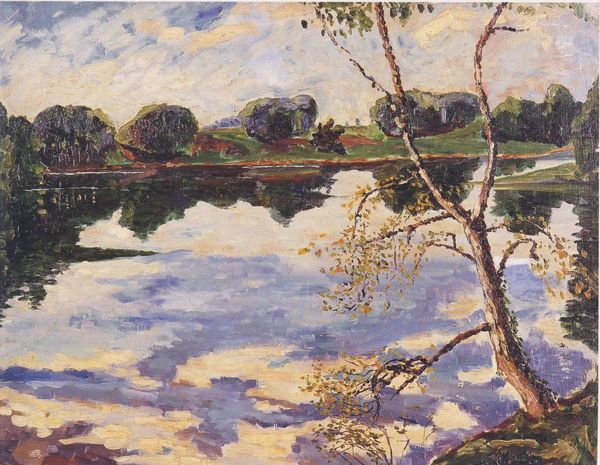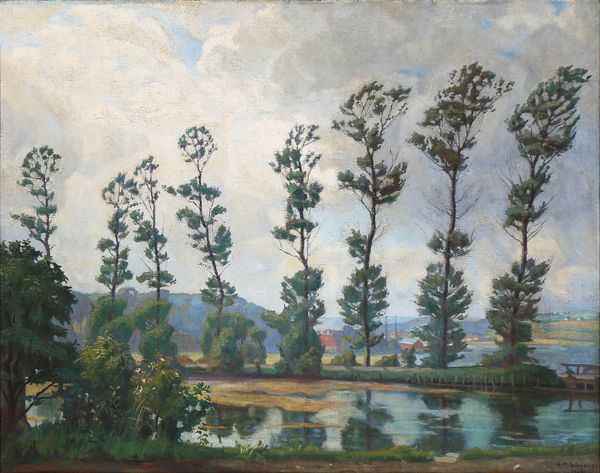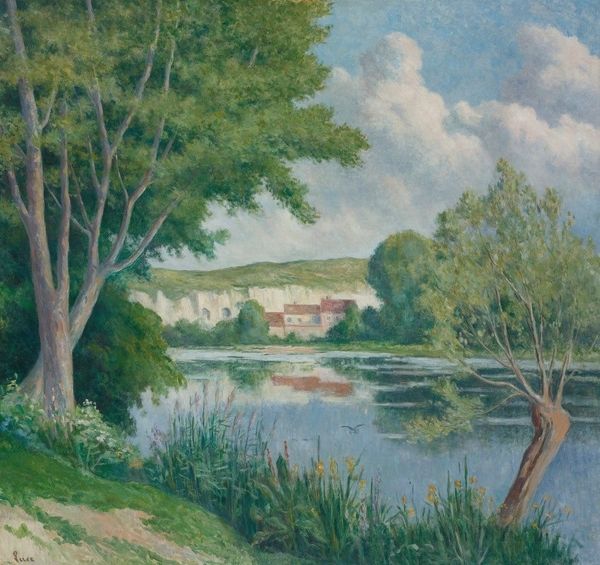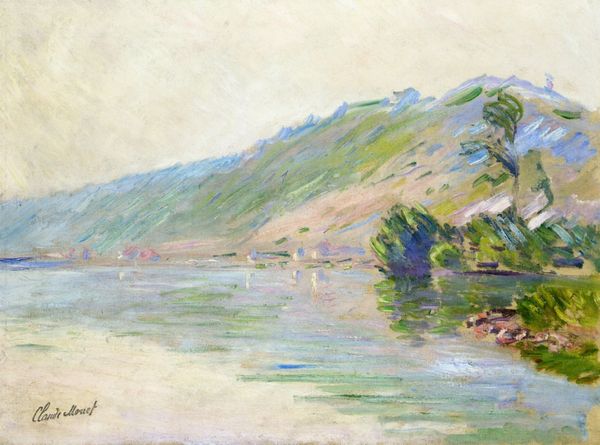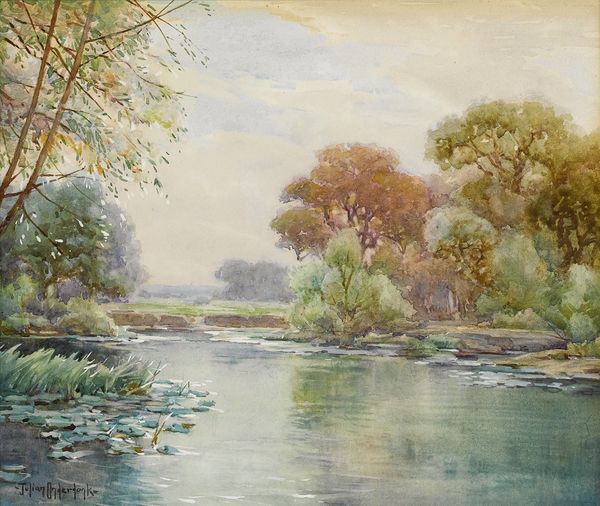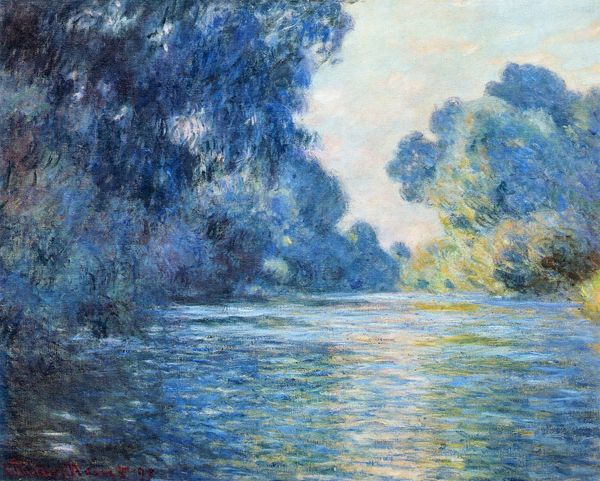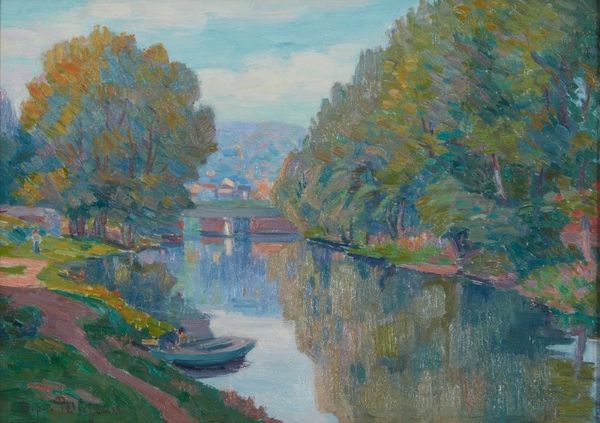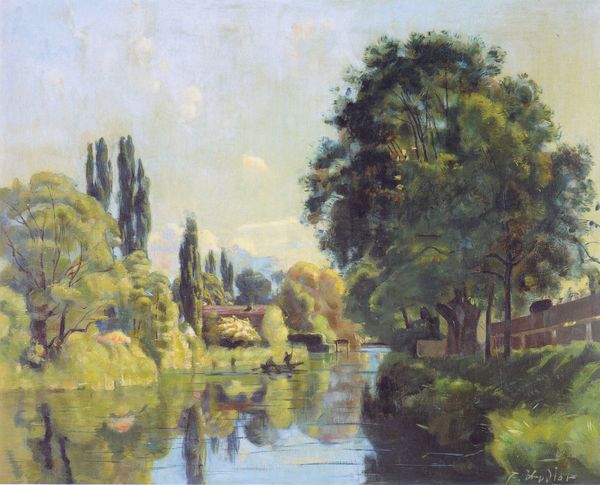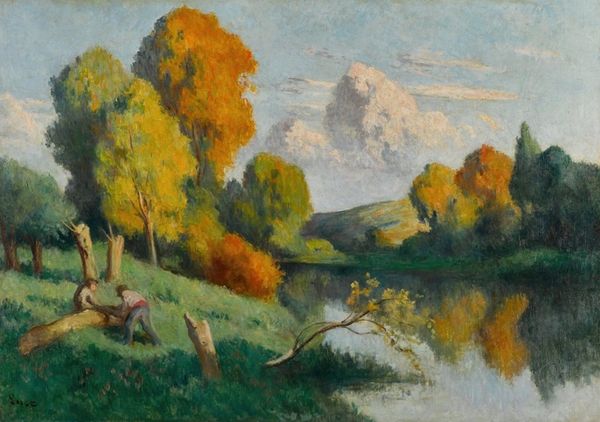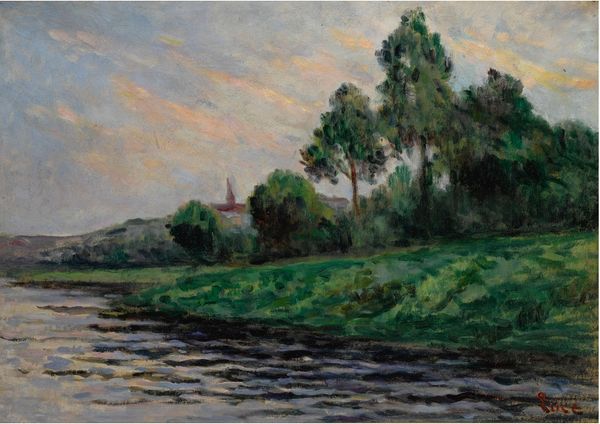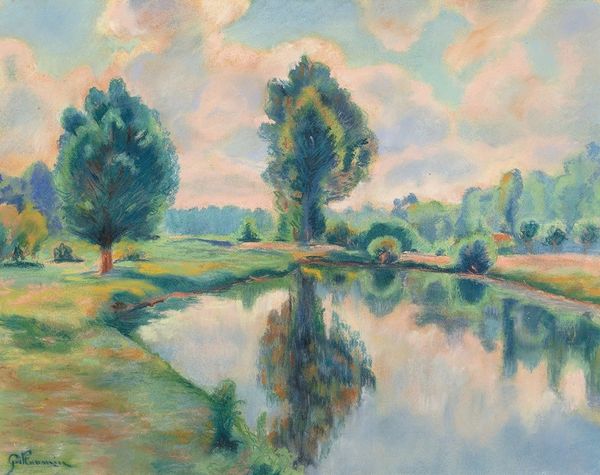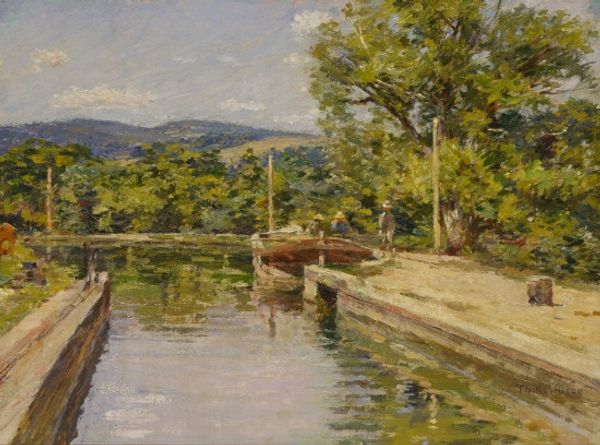
Copyright: Public domain
Editor: Maximilien Luce’s "The Herville Footbridge," painted in 1925 with oil on canvas, gives off such a calm vibe. The water, the greenery…it’s all very peaceful. What strikes you about this painting? Curator: Ah, Luce. He dips his brush into sunlight itself, doesn’t he? To me, it's more than just a pleasant scene. Notice how the bridge acts as a visual connector—a little fragile maybe?—linking the cultivated land with the wilder riverbank. There's a subtle tension there, wouldn’t you say? Like a bridge between different ways of life. And have you ever seen clouds painted with such creamy audacity? They seem ready to drift right off the canvas and into our own afternoon sky. Editor: That's a lovely way to put it! I hadn't thought of the bridge that way – connecting different worlds, so to speak. Is that sense of connection common in Luce’s other landscapes? Curator: It is, and also tension. Luce often juxtaposed the tranquility of nature with hints of industrial presence or social unrest. Even here, in what seems a simple landscape, one can almost sense the rumble of the approaching 20th century. Editor: I see what you mean. It makes you wonder about the lives of the people who would have used that bridge, doesn't it? It’s not just a pretty picture; it's a glimpse into a specific time and place. Curator: Exactly. Art isn’t always about obvious statements; it's often about quiet invitations to reflect. I do appreciate that you saw a calming presence, though. He succeeded on all levels, I’d say. Editor: Definitely! Thanks for sharing your perspective; it's made me appreciate Luce's work on a deeper level. Curator: The pleasure was mine. Art thrives on shared experiences.
Comments
No comments
Be the first to comment and join the conversation on the ultimate creative platform.
